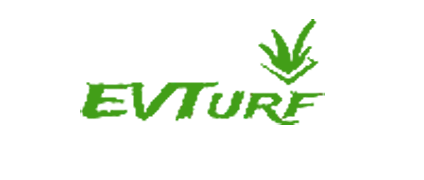FAQS
Frequently Asked questions
WHAT KIND OF MAINTENANCE DOES ARTIFICIAL TURF NEED?
✅ Routine Maintenance (Weekly/Bi-weekly):
1. Remove Debris: Use a leaf blower, plastic rake, or stiff brush to clear leaves, sticks, and trash.
2. Brush the Turf Fibers: Cross-brushing (against the grain) with a broom or specialized turf brush keeps blades upright and prevents matting—especially in high-traffic areas.
3. Rinse the Surface: Hose down the turf to remove dust, pollen, and small debris(few times a year due to hard water.
🧼 Deep Cleaning (Monthly or as needed):
1. Disinfect: Use a turf-safe cleaner or a diluted vinegar/water solution to sanitize, especially in pet areas or sports fields.
2. Remove Pet Waste:
Solid waste: Pick up promptly.
o Urine: Use an enzyme cleaner (PE-51) to control odors(typically 3 times per year).
3. Check Infill Levels (if applicable): Brush and redistribute rubber/sand infill to ensure even support and shock absorption.
🔧 Annual/Seasonal Maintenance:
1. Weed and Moss Control: Apply a turf-safe weed killer or moss treatment if vegetation starts to grow through.
2. De-compact Infill (Sports Fields): Use a mechanical brush or groomer to aerate and de-compact high-use areas.
🚫 What to Avoid:
· No metal rakes or sharp tools (they can damage the turf).
· No harsh chemicals like bleach or strong acids.
· Avoid parking cars or placing heavy objects long-term on turf to prevent crushing the fibers and infill displacement.
Q: HOW DOES SYNTHETIC TURF COMPARE TO NATURAL GRASS?
Synthetic turf and natural grass each have advantages and disadvantages depending on the intended use, maintenance capacity, and environmental factors. Here's a comparison across several key categories:
1. Maintenance
· Synthetic Turf:
o Requires minimal upkeep (no mowing, watering, or fertilizing).
o Needs periodic cleaning and brushing.
o Long-term cost savings on water and maintenance.
· Natural Grass:
o Requires regular mowing, watering, fertilizing, aeration, and pest control.
o Higher maintenance costs and labor over time.
2. Appearance and Feel
· Synthetic Turf:
o Always looks green and even, regardless of weather.
o Can feel less natural; gets hot in direct sunlight.
· Natural Grass:
o Looks and feels more authentic.
o Can brown, thin out, or die in extreme conditions or with neglect.
3. Environmental Impact
· Synthetic Turf:
o Made from plastic; not biodegradable.
o Reduces water use but can contribute to microplastic pollution and urban heat island effect.
o No need for pesticides or fertilizers.
· Natural Grass:
o Absorbs carbon dioxide and supports biodiversity.
o Requires water, fertilizers, and often chemical treatments, which can lead to runoff.
4. Durability and Use
· Synthetic Turf:
o More durable under heavy use (sports fields, high foot traffic).
o Can be used in all weather without damage.
· Natural Grass:
o Can wear down with frequent use or poor weather.
o Requires recovery time after heavy use.
5. Cost
· Synthetic Turf:
o High upfront installation cost.
o Lower long-term maintenance costs.
· Natural Grass:
o Lower initial cost.
o Higher cumulative maintenance costs over time.
6. Safety
· Synthetic Turf:
o Can get very hot and increase risk of heat-related injuries.
o May have harder surface, increasing risk of impact injuries.
· Natural Grass:
o Cooler surface.
o Softer, more forgiving ground for sports or play
Q: WILL MY SYNTHETIC TURF LAWN FADE OR DISCOLOR?
No. All our products are designed to withstand the sun’s UV rays. Which is why UV inhibitors are added into the construction of the blade material. Ensuring the turf retains its color and appearance year-round.
Q: IS ARTIFICIAL TURF SAFE FOR MY CHILDREN AND PETS?
Absolutely! All our products are tested and proven to be Allergen free, non-toxic and certified lead free. (ask to see the certificate) Our products are safe and designed to be used by the entire family, even the 4-legged members.

